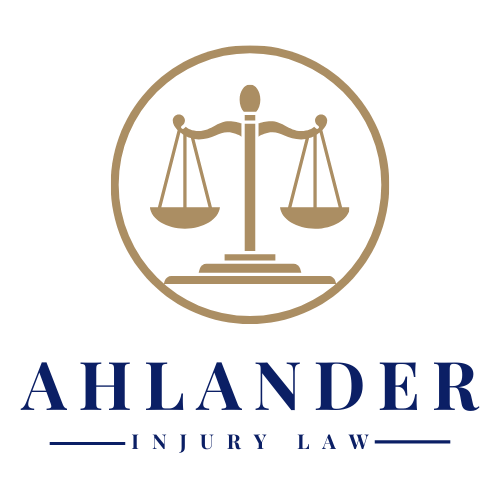Understanding Emotional Distress Damages in Personal Injury Cases
When most people think of personal injury lawsuits, physical injuries like broken bones or whiplash often come to mind. However, not all injuries are visible. Emotional distress—often called mental anguish—is a significant part of many personal injury claims.
At Ahlander Injury Law, we believe it’s essential for clients and readers to understand how emotional distress damages are recognized, quantified, and awarded in the legal system. This knowledge empowers individuals to seek comprehensive recovery for the full scope of harm they have endured.
What Emotional Distress Is in Personal Injury Cases
Emotional distress refers to the psychological impact of an accident or injury. This can manifest as anxiety, depression, insomnia, fear, embarrassment, or a loss of enjoyment in life. Unlike physical injuries, emotional distress is not always immediately apparent, yet it can be just as debilitating. In the legal context, emotional distress is classified as a type of “non-economic damage,” meaning it doesn’t have a direct monetary value like medical bills or lost wages.
Courts recognize that the consequences of a personal injury often reach far beyond the physical. As a result, compensation for emotional distress is a crucial component of many personal injury settlements or verdicts. Individuals who endure traumatic events can experience a wide range of emotional and psychological responses that may persist long after physical injuries have healed.
How Emotional Distress Is Quantified
Unlike economic damages, which can be supported by receipts and invoices, emotional distress is inherently subjective. This makes its valuation more complex. Courts and insurance companies typically consider several factors when determining the appropriate amount of compensation:
- Severity of the Incident: More traumatic or violent events are likely to result in higher emotional distress damages.
- Duration of Suffering: Ongoing psychological symptoms, such as chronic anxiety or post-traumatic stress disorder (PTSD), carry more weight than temporary emotional upset.
- Impact on Daily Life: If emotional distress significantly impairs a person’s ability to work, maintain relationships, or enjoy life, this will be factored into the compensation.
In some cases, a “multiplier method” is used, where the total economic damages are multiplied by a number (between 1.5 and 5, for example) to estimate non-economic damages, including emotional distress. However, this method varies by jurisdiction and is not used in every case.
Overall, claimants who include non-economic damages, such as emotional distress, in their personal injury claims often receive higher overall settlements than those who do not.
Evidence Needed to Substantiate Emotional Distress Claims
Because emotional distress is not visible, substantiating these damages requires thorough documentation and credible evidence. Courts and insurance companies look for objective proof that the claimant has genuinely suffered emotional harm. The following types of evidence are commonly used:
- Medical and Psychological Records: Documentation from therapists, psychologists, or psychiatrists showing diagnosis and treatment of emotional conditions is highly persuasive.
- Testimony: Statements from mental health professionals, as well as family, friends, and coworkers, can help illustrate the changes in behavior or mood following the injury.
- Personal Journals: Consistent written accounts detailing emotional struggles and their impact on daily life can bolster a claim.
- Prescription Records: Evidence of medications prescribed for anxiety, depression, or sleep disturbances can further validate claims of emotional distress.
While self-reporting is valuable, objective evidence—especially from licensed professionals—carries more weight in court.
Types of Emotional Distress Recognized by Law
Two main categories of emotional distress are recognized in personal injury law: “pain and suffering” and “intentional infliction of emotional distress.”
- Pain and Suffering: This is the most common category and covers the emotional anguish directly resulting from a physical injury. It can include fear, grief, anxiety, and loss of enjoyment of life.
- Intentional Infliction of Emotional Distress (IIED): This arises when someone’s outrageous or egregious conduct intentionally causes severe emotional harm to another. IIED claims have a higher burden of proof and are less common in standard personal injury cases.
Challenges in Proving Emotional Distress
Despite its significance, emotional distress is one of the most challenging damages to prove. Insurance companies may argue that symptoms are exaggerated or unrelated to the incident.
This is why working with experienced attorneys, like those at Ahlander Injury Law, is vital. We help clients collect and present robust evidence to strengthen their claims. Legal representation can significantly improve the odds of a successful emotional distress claim.
How Courts and Juries Evaluate Emotional Distress
When emotional distress claims reach trial, juries are tasked with evaluating the credibility and severity of the claimant’s suffering. They may consider:
- The consistency of the claimant’s accounts over time
- Corroborating testimony from witnesses
- The plausibility of emotional harm given the circumstances of the accident
- The claimant’s demeanor and presentation on the stand
Juries are instructed to use their judgment and common sense in assigning a dollar value to emotional distress. While some states have imposed caps on non-economic damages, others allow juries significant discretion.
The Role of Legal Representation in Emotional Distress Claims
Navigating emotional distress claims without legal guidance can be overwhelming. Attorneys play a crucial role by helping clients:
- Gather and organize evidence
- Connect with qualified mental health professionals
- Articulate the full impact of emotional distress to insurers and juries
- Advocate for fair compensation in negotiations or at trial
At Ahlander Injury Law, we take pride in providing compassionate and effective representation for clients struggling with both visible and invisible injuries. Our commitment extends to ensuring each client’s emotional suffering is recognized and valued in the recovery process.
Moving Forward After Emotional Distress
No one should have to face the aftermath of an accident alone—especially when the harm goes beyond what meets the eye. If you or someone you love is dealing with emotional distress after a personal injury, seeking support from both mental health professionals and experienced legal counsel is crucial.
For more information on how Ahlander Injury Law can assist you, contact us today. Understanding your rights and the value of emotional distress damages is the first step toward a more complete recovery—because healing is more than just physical.





